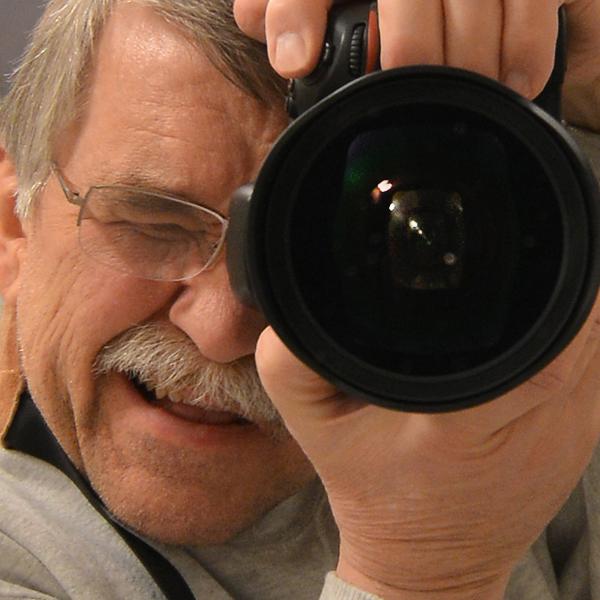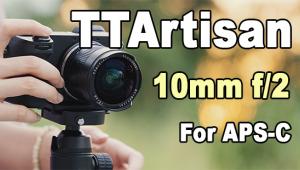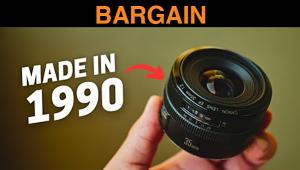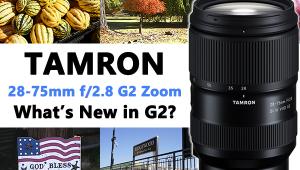I have read many reviews including one on Dpreview.com and DXO. None of them like the lens. Sigma says this lens is to compete with Canon 11-24mm but it is not even close in performance to Canon. I have last version of this lens and this new one is not any better. Yet it cost twice as much.
Sigma 12-24mm f/4 DG HSM Art Lens Review

If you’re into high quality glass, the Sigma 12-24mm f/4 DG HSM Art is the kind of lens you can get lost in. Build quality is exceptional, performance is outstanding and…I’m getting ahead of myself, but you’ll see the world in a whole new way when you use this lens.
Let’s get this out of the way; this is a rectilinear lens based on my anecdotal testing. That’s a good thing. When held parallel to a structure, horizontal and vertical lines are rendered properly horizontal and vertical. In other words, it’s not a Fisheye, despite its extreme wide angle. Or to put it more poetically, the Sigma 12-24 Art lens can shoot straight if you can.

And it’s big, make no mistake about it. It can hide behind a 4x5-inch print but just barely. It tips the scales at a trifling 2.5 pounds which makes it nearly as heavy as a Nikon D4S (2.65 pounds) but it’s nicely balanced and I found it surprisingly comfortable to shoot, even for hours on end, without fatigue.
The Sigma 12-24mm f/4 Art zoom is a constant f/4, meaning the aperture does not change when the lens is zoomed out. This speed is terrific for low-light, indoor shots. Because modern DSLR cameras (like the Nikon D800 I used with this zoom) are so good at high ISO levels, you might say that “f/4 is the new f/2.”
 This Sigma zoom covers the full 24x36mm sensor found in full-frame DSLR cameras, and of course also works with APS-C type models. The large—almost mesmerizing—front element is protected by Super Multi-Layer Coating which combats flare and resists spurious angular light. Both the front and rear elements are protected by a hydrophobic, oil-repellant coating.
This Sigma zoom covers the full 24x36mm sensor found in full-frame DSLR cameras, and of course also works with APS-C type models. The large—almost mesmerizing—front element is protected by Super Multi-Layer Coating which combats flare and resists spurious angular light. Both the front and rear elements are protected by a hydrophobic, oil-repellant coating.
Minimum focus distance is 9.4 inches when used at the 24mm zoom position. Because all wide angle lenses make closer objects appear larger, this close-focus option is a lot of fun. Try getting 10 inches away from your dog’s nose and snapping a shot. The aperture is a 9-blade, rounded type, which is a plus when you seek pleasant bokeh (although because of the extraordinary depth-of-field, this is not the lens to hunt bokeh with).
Sigma’s 12-24mm Art zoom is constructed partially from TSC (Thermally Stable Composite) material which is strong, light and stable under a wide temperature range. The body and ingress areas of the lens feature dust and splash resistant construction with rubber sealing.
This lens is compatible with the optional Sigma USB Dock which is used to customize lens characteristics and for updating lens firmware.
Powerful Zoom Range
A 24mm lens is a blast, and anything wider than that on a full-frame DSLR is amazing fun. So imagine using a lens that zooms from 12mm to 24mm. The Sigma 12-24mm Art zoom stretches the walls of small rooms and makes them appear huge. And because of the rectilinear design, it’s ideal for architectural shots.

High Performance
The autofocusing speed was very impressive, and the overall performance was excellent. Image quality was consistent from shot-to-shot as was color rendering and contrast. I am always wary of wideangle lenses, particularly wideangle zoom lenses, and vigilantly check for darkened corners (vignetting) and for loss of sharpness at extreme edges. I’m happy to report that the Sigma 12-24mm Art zoom that I used performed flawlessly in these areas.
Build Quality
From the included case to the all-brass lens mount, it’s clear that build quality was a key goal for Sigma. Tactile feedback is outstanding—it feels good in the hand—and both the zoom and auto-clutch-type focusing ring rotate with silky smooth precision.
As mentioned above, AF speed is great, and that’s due in part to the use of a Hyper Sonic Motor (HSM) which is said to deliver higher torque. It’s also quiet and permits manual override.

Optical Quality
Sigma’s design incorporates FLD and aspheric elements to achieve this extreme wide angle configuration in a relatively small package and virtually eliminate all traces of aberrations. Sigma claims that the 12-24mm Art zoom contains the largest aspherical element in the industry. I was particularly impressed by the way the zoom handled shots that slightly included the sun in the frame. Unlike many WA lenses, it didn’t produce those obnoxious angular streaks and flares.

Conclusion
I can think of a thousand places to use the Sigma 12-24mm f/4 DG HSM Ar lens—from the NJ Balloon Festival to the Okefenokee Swamp. Overall performance and image quality are both outstanding and the construction is top notch.
Because the extremely wide zoom range is unfamiliar to most of us, it’s hard at first to imagine how cool this lens really is—until you use it. From that point on, you begin seeing things a little bit differently. What more could a photographer ask for?
—Jon Sienkiewicz
- Log in or register to post comments


















































